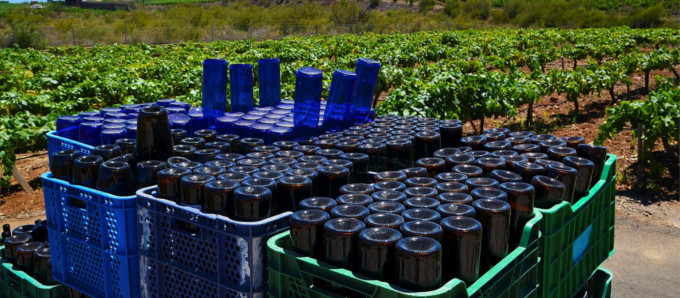Eco-friendly products are not new for consumers, and many brands are beginning to change their processes to be more environmentally focused. Often, starting small is the best way to ensure buy-in while making a profound impact. Utensils are the best way to start small for restaurants and food service businesses. These convenient, typically plastic items are a necessity yet create significant waste due to their single-use nature. As a result, there has been a rise in the use of sustainable utensils, with agave products leading the charge.
How Long Do Single-use Utensils Take to Breakdown?
Plastic can take up to 100 to 1000 years to degrade in landfills. Despite this, many restaurant owners and consumers prefer these utensils for their general quality and functionality.
On the other hand, paper products take much less time to degrade than plastic. However, their quality can waver significantly, especially in the case of straws. The construction of paper utensils and raw materials tend to fall apart easily during use. As the research states, paper straws tend to absorb approximately 30% of the straws’ weight, leading to them becoming soggy in around 30 minutes.
Agave-based products bridge this gap, being capable of breaking down in industrial composting facilities and holding up to essential tasks.
Agave as a Sustainable Alternative
Every year, up to five million pounds of agave waste are discarded from the tequila industry. This is because only part of the agave plant is needed for distillation. Rather than accumulating in landfills, this waste can be upcycled into biodegradable utensils such as straws, spoons, forks, and knives.
Utilizing agave to create sustainable products reduces the demand for farmed and natural resources, including sugarcane, canola, trees, and forests. This further reduces emissions related to farming, such as deforestation and transportation, helping companies focus on sustainable practices.
Why choose agave products?
One key issue facing restaurant businesses today is whether to stock utensils made of plastics or environmentally friendly materials. Unlike plastic, agave-based straws typically degrade and break down after 18-24 months, while cups and cutlery break down in 24-36 months.
Another key issue facing businesses is choosing sustainable paper products. However, paper products are generally of poor quality, and they quickly sod up and become unusable, which affects the consumer experience.
Fortunately, unlike traditional plastic or paper-based goods, agave offers a superior alternative that doesn’t get soggy thanks to thermoforming manufacturing processes. Agave utensils can also be used for food and drinks at various temperatures, from hot to cold.
How Agave Utensils are Made
Agave can be grown in desert-like climates with minimal cultivation and water usage. Once the plant is harvested, the fibrous leaves are robust and capable of being broken down and recycled through thermoforming to be shaped into utensils. This straightforward process ensures the agave plant is fully used and thus diverted from industrial waste. The final product can return to the earth under proper biodegradable or compostable conditions.
Utensils of the Future
Agave products break down in months—not decades—offering a practical solution for consumers and businesses looking to start small with more eco-friendly utensils. Diverting agave waste and reducing the need for deforestation highlight the immense potential of recycled materials in reshaping industries.
—
About the Author
Eric Brass, CEO of The Sustainable Agave Company. Eric founded the business to transform agave waste into sustainable packaging, merging environmental responsibility with business innovation.







